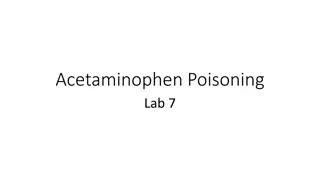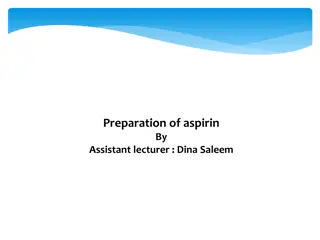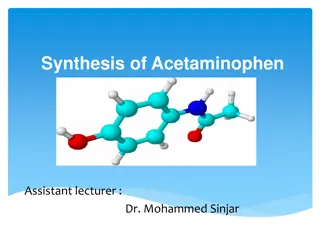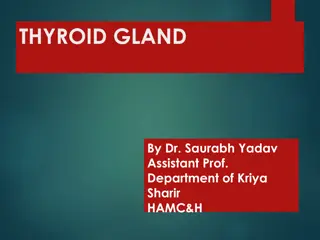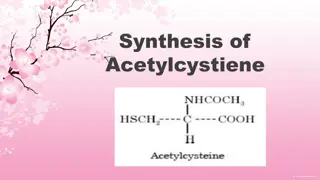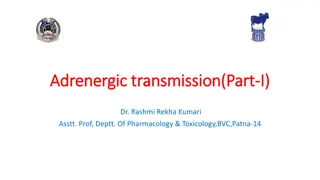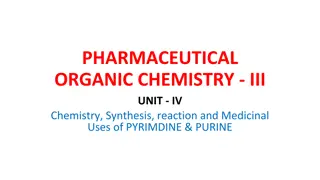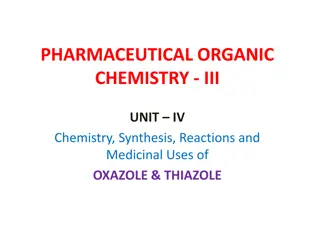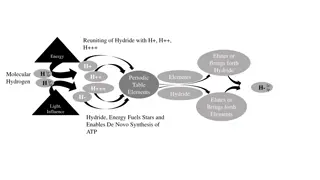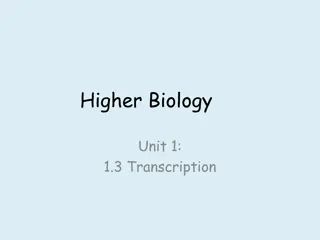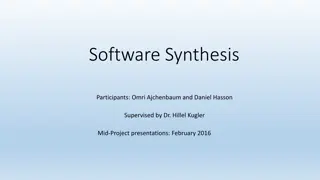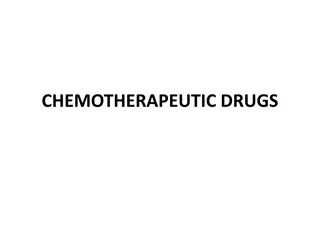Synthesis and Uses of Acetylcysteine
Acetylcysteine is synthesized by acetylating L-Cysteine in the presence of acetic anhydride and sulfuric acid. It finds various uses, including reducing pulmonary secretions' viscosity, treating acetaminophen overdose, and acting as a chelating agent. The procedure involves precise steps and precautions to ensure successful synthesis.
Download Presentation

Please find below an Image/Link to download the presentation.
The content on the website is provided AS IS for your information and personal use only. It may not be sold, licensed, or shared on other websites without obtaining consent from the author.If you encounter any issues during the download, it is possible that the publisher has removed the file from their server.
You are allowed to download the files provided on this website for personal or commercial use, subject to the condition that they are used lawfully. All files are the property of their respective owners.
The content on the website is provided AS IS for your information and personal use only. It may not be sold, licensed, or shared on other websites without obtaining consent from the author.
E N D
Presentation Transcript
Synthesis of Acetylcystiene
Theory: L-Cysteine is directly acetylated with acetic anhydride in the presence of a few drops of concentrated sulphuric acid to produce acetylcysteine and a mole of acetic acid. The H2SO4present helps in the abstraction of one H- atom from the amino function of L-cysteine to form one mole of acetic acid.
Uses : (1) It reduces the viscosity of pulmonary secretions and facilitate their removal. (2) It is most effective in 10% to 20% solutions with a pH of 7 to 9 ; and is mostly employed either by direct instillation* or by acerosol nebulization. (3) Administration of N-Acetylcysteine (NAC) appears to reduce symptomatology associated with influenza and influenza-like episodes.
(4) Oral supplementation with NAC might be a prudent recommendation for smokers or individuals constantly exposed to second-hand smoke. (5) NAC is the antidote of choice for acetaminophen (paracetamol) overdose or poisoning. (6) NAC seems to have some clinical usefulness as a chelating agent in the therapy of heavy-metal poisoning. (NAC effectively chelates Au, Ag and Hg.)
(7) NAC may have a beneficial therapeutic effect on ocular symptoms of Sjogren s Syndrome.
Procedure: 1. Weigh 0.5 g of L-cysteine and transfer to conical flask. 2.Add to the flask 1mL of acetic anhydride and 1 drop of concentrated sulphuric acid carefully. 3. Mix the contents of the flask intimately, and warm the mixture over a water-bath maintained at 60 C for about 20 minutes with intermittent stirring. 4.Allow the contents of the flask to attain room temperature, and pour the contents in a thin stream right into 10 ml of cold water in a beaker with frequent stirring with a glass rod. 5. Filter the crude product on a B chner funnel wash it generously with cold water, drain well and dry the product in an oven maintained at 80 C.
Precautions : (1) All glass apparatus used in the above synthesis should be perfectly dry. (2) Addition of the drop of concentrated sulphuric acid must be done very carefully. (3) The reaction mixture is to be warmed at 60 C for a duration of 20 minutes only.
Recrystallization: The crude product may be recrystallized from a mixture of rectified spirit and water (1 : 1). The yield of pure white, crystalline powder (mp 106 109.5 C).
Calculations:Theoretical yield/Practical yield: The theoretical yield is calculated from the equation as given below : 121 g of L-Cysteine on reacting with 102 g of acetic anhydride yields acetylcysteine = 163 g L-Cysteine acetylcysteine 121 g 163 g 0.5 g X 0.5g of L-cysteine shall yield acetylcysteine =163 0.5 / 121 = 0.67 g Hence, Theoretical yield of Acetylcysteine = 0.67g Actual Practical yield =Y g Therefore, Percentage Practical yield = Practical yield / Theoretical yield 100 =Y/ 0.67 100 = Z %


